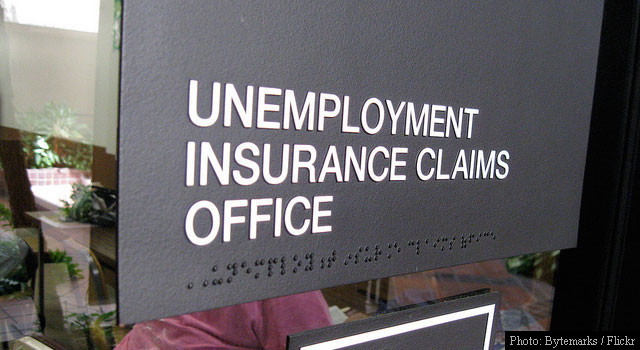People generally do what you pay them to do. If you pay them to work, they work; if you pay them not to work, they don’t.
I am not the first person to make this observation, nor is this the first time I have made it. But a recent study by the Federal Reserve Bank of New York puts an interesting spin on this proposition, one that helps explain why job creation is surging and unemployment is falling, even though wages are stagnant.
It turns out, apparently, that if you pay someone not to work, it makes it more expensive for an employer to pay them to actually show up at a job every day. In the parlance of economists, you have raised the “reserve wage,” which is the minimum wage at which someone is willing to take a particular job. By raising the reserve wage, and thus the cost of labor generally, you create a strong incentive for employers to try to get by with fewer workers, and thus you discourage job creation.
This insight turns one of the criticisms of unemployment benefits on its head. Many on the conservative end of the political spectrum believe generous and prolonged payments to unemployed individuals discourage those individuals from seeking work. It may turn out that the bigger consequence is that such benefits discourage businesses from creating jobs in the first place. The two effects are not mutually exclusive.
From this angle, recent signs of progress in the U.S. economy make more sense. The national unemployment rate fell to 5.8 percent in October, according to the Bureau of Labor Statistics. Since the beginning of the year, the unemployment rate has declined 0.8 percent overall. Employers added 214,000 new jobs last month, and as Ben Casselman observed at FiveThirtyEight, “Job growth has now topped 200,000 for nine straight months for the first time since the Clinton administration.”
As the New York Fed study observed, these developments coincide almost perfectly with the nationwide end of federally funded extended unemployment benefits this past January. While this change is not the only reason for the rate’s decline, it has had an effect all the same, which the study sought to quantify by contrasting developments in adjacent states during the previous five years, a period in which extended unemployment availability changed multiple times, and at different times in neighboring states.
When their benefit window runs out, some workers continue to search for work, but others do not. Some of them may turn to disability claims instead. Disability applications have dropped relative to last year, but remain much higher than pre-recession levels.
While employment has not returned to pre-recession levels yet, the trend has continued to move steadily in that direction. Yet according to exit polls at the midterm elections, 70 percent of respondents said the economy was bad and 78 percent said they were worried about what would happen to the economy in the next year. A good deal of the disconnect between the positive unemployment data and the skeptical public reaction to it is probably explained by another statistic from the BLS, which reported no rise in hourly wages in October. An average worker earned $24.57 an hour in October, only 2 percent more than October 2013.
It is also worth noting that while fewer people are unwillingly working only part-time than was the case during the Great Recession, involuntary part-timers still account for 4.8 percent of those employed. This number is probably driven, at least in part, by employers’ incentive to offer more part-time positions and fewer full-time ones when possible to avoid certain provisions of the Affordable Care Act that make full-timers significantly more expensive.
Another consequence of extended unemployment benefits can probably be found in the number of workers staying in the work force, or exiting it. Over the past six years, 12.6 million Americans have left the labor force altogether, according to the Pew Research Center. A sizable fraction of them likely dropped out after their unemployment eligibility expired, since it is a condition of receiving benefits that the worker remain available for employment if a suitable job comes along. Our long experiment with extended unemployment benefits probably slowed down the exodus of marginally attached workers from the labor force, but it could not stop it.
The Great Recession began late in 2007 and was officially over by the middle of 2009, yet we continued to offer long-term, federally paid unemployment benefits until the end of 2013. During that time, we have seen a listless recovery that was slow to create jobs until this year, when the extended benefits ran out, and that continues to be slow to raise workers’ wages. What lessons can we draw?
One would seem to be that unemployment benefits are a powerful narcotic for workers and politicians alike. They can be necessary sometimes, but should be prescribed sparingly and for as short a term as possible if we want to encourage a speedy return to real economic health.
Disclaimer: This page contains affiliate links. If you choose to make a purchase after clicking a link, we may receive a commission at no additional cost to you. Thank you for your support!




Leave a Reply